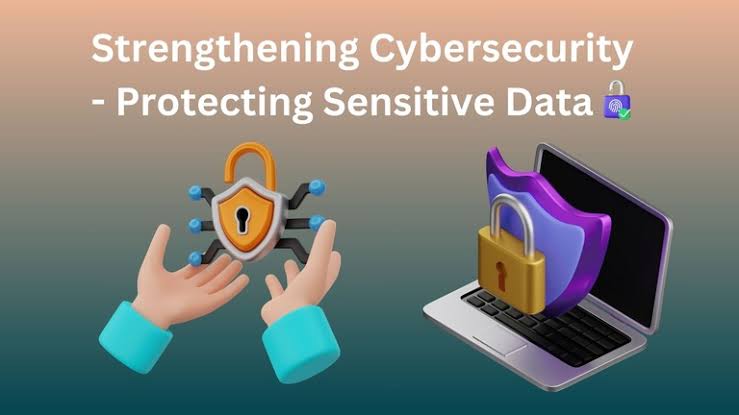In today’s digital age, the protection of sensitive data online has become one of the most critical priorities for individuals, businesses, and governments. With cyberattacks becoming more sophisticated and frequent, the need for effective cybersecurity measures is greater than ever. By 2025, data breaches, ransomware attacks, phishing scams, and identity theft have emerged as significant threats, costing organizations billions of dollars annually and eroding consumer trust.
Cybersecurity is no longer just an IT concern; it is a fundamental aspect of online safety for anyone who interacts with the internet. Protecting sensitive data requires a proactive approach that combines advanced technologies, strong security practices, and continuous awareness.
Understanding the Importance of Data Protection
Sensitive data includes personal information such as financial records, passwords, health data, and intellectual property. When this information falls into the wrong hands, it can lead to identity theft, financial loss, and reputational damage.
As digital transactions and online services expand, the importance of data protection has grown significantly. Organizations that fail to implement robust security measures risk not only financial penalties but also losing the trust of their customers.
Strong Passwords and Multi-Factor Authentication
One of the most basic yet effective cybersecurity measures is the use of strong passwords. Weak or reused passwords are often the first targets of cybercriminals. A strong password should be long, unique, and include a mix of letters, numbers, and symbols.
Multi-factor authentication (MFA) adds an additional layer of security by requiring users to verify their identity through multiple methods, such as a code sent to a mobile device or biometric authentication like fingerprint or facial recognition. MFA significantly reduces the risk of unauthorized access.
Encryption of Data
Encryption is a critical tool for securing sensitive information. By converting data into an unreadable format that can only be deciphered with the correct key, encryption protects data during transmission and storage.
Businesses often use end-to-end encryption for communications and cloud storage to ensure that even if data is intercepted, it cannot be accessed without the proper decryption keys.
Regular Software Updates and Patches
Cybercriminals often exploit vulnerabilities in outdated software to launch attacks. Regularly updating operating systems, browsers, and applications ensures that known security flaws are patched.
Automatic updates should be enabled whenever possible to reduce the risk of missing critical security patches. For businesses, implementing centralized patch management systems is essential to maintain network security.
Firewalls and Antivirus Protection
Firewalls act as barriers between a user’s device or network and potential threats from the internet. They monitor incoming and outgoing traffic to block suspicious activity.
Coupled with reliable antivirus and anti-malware software, firewalls provide essential protection against common cyber threats such as viruses, ransomware, and spyware. Regular scans and updates to antivirus programs ensure ongoing protection.
Secure Wi-Fi Networks and VPNs
Public Wi-Fi networks are often targets for cybercriminals due to their lack of encryption. Using virtual private networks (VPNs) helps secure internet connections by encrypting the data being transmitted.
For businesses, securing Wi-Fi networks with strong passwords and encryption protocols such as WPA3 is crucial for protecting internal communications and sensitive data.
Employee Training and Cyber Awareness
Human error remains one of the leading causes of data breaches. Phishing attacks, where cybercriminals trick individuals into revealing sensitive information, are particularly common.
Regular training sessions help employees recognize and avoid suspicious emails, links, and attachments. Creating a culture of cybersecurity awareness ensures that everyone within an organization contributes to data protection.
Backups and Disaster Recovery
Regularly backing up data is vital for minimizing the damage caused by ransomware attacks or system failures. Backups should be stored in secure, offline locations or on encrypted cloud platforms.
A disaster recovery plan ensures that organizations can quickly restore operations and access critical data in the event of a cyberattack or data loss.
Monitoring and Intrusion Detection
Modern cybersecurity strategies rely on real-time monitoring of networks and systems to detect unusual behavior. Intrusion detection systems (IDS) and intrusion prevention systems (IPS) can identify and block potential threats before they cause harm.
Advanced analytics and AI-driven monitoring tools enhance this capability by identifying patterns and predicting potential security risks.
Conclusion
Protecting sensitive data online requires a multi-layered approach that combines strong passwords, encryption, regular software updates, and continuous monitoring. By 2025, cybersecurity is not just about reacting to threats but proactively preventing them through advanced technologies and employee awareness.
Individuals and organizations that prioritize cybersecurity measures can significantly reduce the risk of data breaches and maintain trust in an increasingly digital world.




By 2025, effective cybersecurity hinges on a proactive, multi-layered approach that includes regular data backups, robust disaster recovery plans, real-time monitoring, and advanced intrusion detection systems.
Interesting